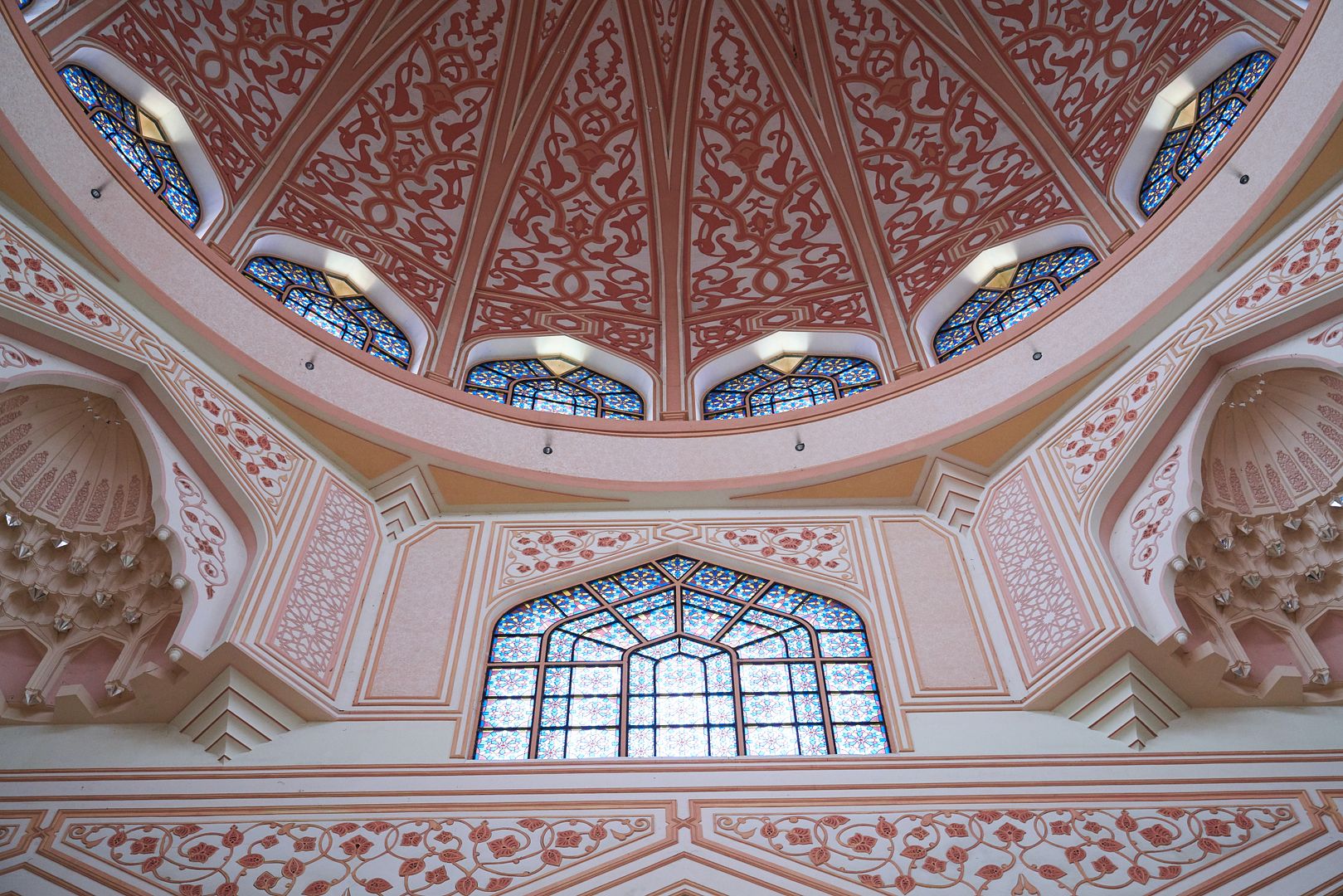(Part 1)
-
Carefully structured and maintained arguments for any interesting claims that people believe. For instance, I would like to see the argument for any of the causes generally considered Effective Altruist carefully laid out (I’m not claiming that these don’t exist, just that they aren’t known to me).
-
A wider variety of accommodations. For instance, you could rent houses in cheap versions of this sort of style:
(A view of the interior of Nasir ol Molk Mosque located in Shiraz, Iran. Image: Ayyoubsabawiki, CC BY-SA 4.0, via Wikimedia Commons)
(Interior view of the dome of the Shah Mosque, Isfahan, Iran. Photo: Amir Pashaei, CC BY-SA 4.0, via Wikimedia Commons)
(Sheikh Lotfallah Mosque, Isfahan, Iran. Photo by Nicolas Hadjisavvas, CC BY 2.5, via Wikimedia Commons)
-
Adult dorms. An organization would buy a complex that could house something like a few hundred people, and had common areas and such. They would decide on the kind of community they wanted, and what services they would provide (e.g. cleaning, food, nice common areas). There would be a selection process to get in. If you lived there, you would be assumed part of the community, like in school.
-
Well directed quantitative contests and assessments for adults, that put numbers on things that the adults would like to care about. If there were a Save The World From X-Risk Olympiad, or an ‘expected relative value of your intellectual contributions’ number that was frequently updating, it would be easier to optimize for those things relative to e.g. optimizing for number of internet-dogs who visited your page, or success at memorizing Anki cards.
-
Social-implication-limited socializing services. There are many reasons to want to be around other people, and not all of them are strongly correlated with wanting the entire cluster of attributes that come with the specific personal relationships that you want. For instance, if you want some social pressure to have your act together sometimes, but the kinds of people you make friends with are too forgiving, you can have someone with their act together stop by sometimes and totally expect you to be on top of things. Or if you are sick and want someone nice to take care of you, yet none of your specific personal relationships are at a point where getting vomit on them would be a plus? Or if you just sometimes want to tell a young person some useful life-lessons, so you be helpful instead of irrelevant, you don’t have to go out and have a whole relationship with a younger person to do that.
(If this went well, an ambitious version might try to move into transactionalizing less-transactional relationships, where for instance you say you want to have a long term slightly flirtatious yet old fashioned relationship with the person you buy bread from, and your preferences are carefully assessed and you are sent to just the right bread seller, and you don’t even like bread, but you like Raf’s bread because you know the whole story about his epic fight for the recipe, and you were there when the buckwheat got added, and the smell reminds you of a thousand moments of heartfelt joy at his counter, laughing together over a pile of loop-shaped loaves like this one. Which is exactly what you wanted, without the previous risks and trials and errors of being unusually open in bakeries across your city.)




.jpg)

Much of architecture is a trade-off between price and interestingness. And on that frontier, we largely prioritise cheap over interesting.
I do wonder, though, if we are stuck in a local maximum around rectangular floor-plans. If you start from first principles, you easily find cost- or space-efficient options with irregular room shapes. Think of geodesic domes, or this school layout.
But our world assumes straight walls meeting at right angles. Architects I’ve talked to say they wouldn’t consider anything else, because it would be so risky and expensive to go so far outside normal practice. How do you install plumbing in a curved wall? What would it take to get building permits? Do you need different furniture?
These are mostly coordination issues, not fundamental problems. If oval rooms became common then the plumbers and surveyors and the interior designers would adapt, and a great many more building styles would become practical. And where there are fundamental problems (e.g. geodesic domes are famously leaky), sufficient practice would lead to us at least finding workarounds.
So if to encourage more interesting accommodation, I would try to jolt us into a world where more diverse floorplans are possible. Maybe start in a setting where it is already conceivable (perhaps some industrial context?) and try to expand non-rectangular norms into the mainstream
I think architects are correct to be skeptical of their own ability to do stuff other than right angles. MIT’s Stata Center is famously interesting, and also is full of leaks and mold because it doesn’t do the basic building thing of keeping the rain out. https://www.core77.com/posts/8026/mits-stata-center-gets-moldy-gehry-sued-over-flawed-design-8026
That school layout looks to me like it has a lot of rooms that don’t have windows which most people would see as undesireable for a school.